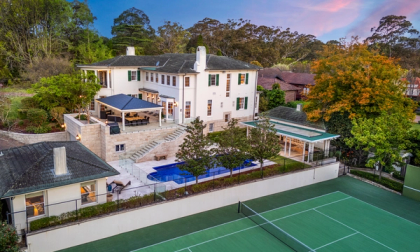
Intergenerational living on the Upper North Shore
Here on Sydney’s Upper North Shore, we often see multiple generations of the same families (and sometimes other families) choosing to live together under the same roof.
We explore what’s behind the trend and look at what makes a great multi-generational home.
The rise of the extended family
Many people are choosing to live with extended family. In fact, UNSW research found that as many as 20% of Australians now live in a “multi-generational” household, or one where grandparents, grandchildren, great-aunts or uncles, live with their children and grandchildren.
At the same time as this happens, more young adults are remaining in the family home well beyond their late teens. More than 40% of people in their early twenties and 20% of people in their late twenties still ‘live at home’, according to the Australian Institute of Family Studies.
What’s behind the intergenerational living trend?
Several factors are contributing to this growth in intergenerational living.
-
The rising cost of property. Sydney property is comparatively expensive and the Upper North Shore is one of the more established and expensive parts of our city. The median house price in suburbs such as Killara, Lindfield and Warrawee is around $4 million. Pooling together can make it easier for many families to afford a great home in a suburb they want to live in.
-
An aging population. With so many of us living and staying healthier for longer, living together has become a way for adults to assist their parents or grandparents without the need for aged care.
-
Cultural factors. In many cultures, such as in China, it is the norm for many generations to live together.
-
Changing family dynamics. It’s often common for multiple generations to live together after a life changing event such as divorce, a birth or the death of a family member.
These are just some of the factors that are influencing more of us to consider living with multiple generations, and ultimately everyone has their own reasons for considering the move.
The pros and cons of intergenerational living
Living with several generations under the same roof can bring a number of benefits.We’ve set out some of the key ones below.
-
It’s often cheaper. By living together we can save money on electricity, rates and other bills.
-
We can live somewhere better. By pooling financial resources, we can often afford homes that would otherwise be out of our price range.
-
It provides better social connection. The pandemic made many of us understand the importance of social contact, and intergenerational living can provide positives across the ages.
-
It can be more environmentally friendly. Some people are choosing to reduce their carbon footprint by sharing resources and reducing consumption.
But there are some other factors to consider when contemplating multigenerational living too. Some of the common ones include:
-
Lack of privacy. For adult children, living in close proximity to parents or in-laws can limit personal privacy and autonomy. You may begin to feel a lack of personal space.
-
Conflicting expectations. Differences in parenting styles or routines can lead to unwanted advice and disagreements. Similarly, you may find you have different values or lifestyles.
-
Lack of space. Sharing living and communal spaces like kitchens or bathrooms can require careful planning, adaptation and compromise.
-
Interpersonal dynamics. There can be heightened potential for conflicts, misunderstandings and strained relationships.
-
Limited independence or autonomy. Both older and younger people can sometimes feel less independent, whether that’s due to having to keep noise down, navigate shared responsibilities or consider others before making a decision.
What makes a great multi-generational family home?
With intergenerational living on the rise, more people are looking at homes that can accommodate several generations comfortably. If you’re doing the same, these are the key things we think you should consider.
-
Space and privacy. You should aim to find a home where everyone has their own personal area to escape from others. This is something particularly important for any introverted family members who may find the constant noise and busyness of extended family life difficult to cope with.
-
Good common areas. There will be times when you also want to come together, and you should make sure you have large enough common areas to accommodate everyone.
-
If you have older family members living with you, you’ll need to be mindful of their mobility. You should especially be careful to make sure any bathrooms are accessible and that they won’t have too many stairs to contend with.
-
Multiple entrances or dwellings. Where people are living different lives, it often pays to have more than one entrance or even a separate dwelling, such as a granny flat, for one generation to live in. This can give people the opportunity to come and go as they please without disturbing other family members.
You may not be able to find absolutely everything you’d like for your family in a property. However, if you keep an open mind in your search and you’re prepared to carry out at least a minor renovation, you may be able to get something that’s pretty close to perfect.
Want more? Thinking of buying, selling or renting on Sydney’s Upper North Shore, including Ku-Ring-Gai and Hornsby Shire? Get in touch.
Was this content helpful to you?





